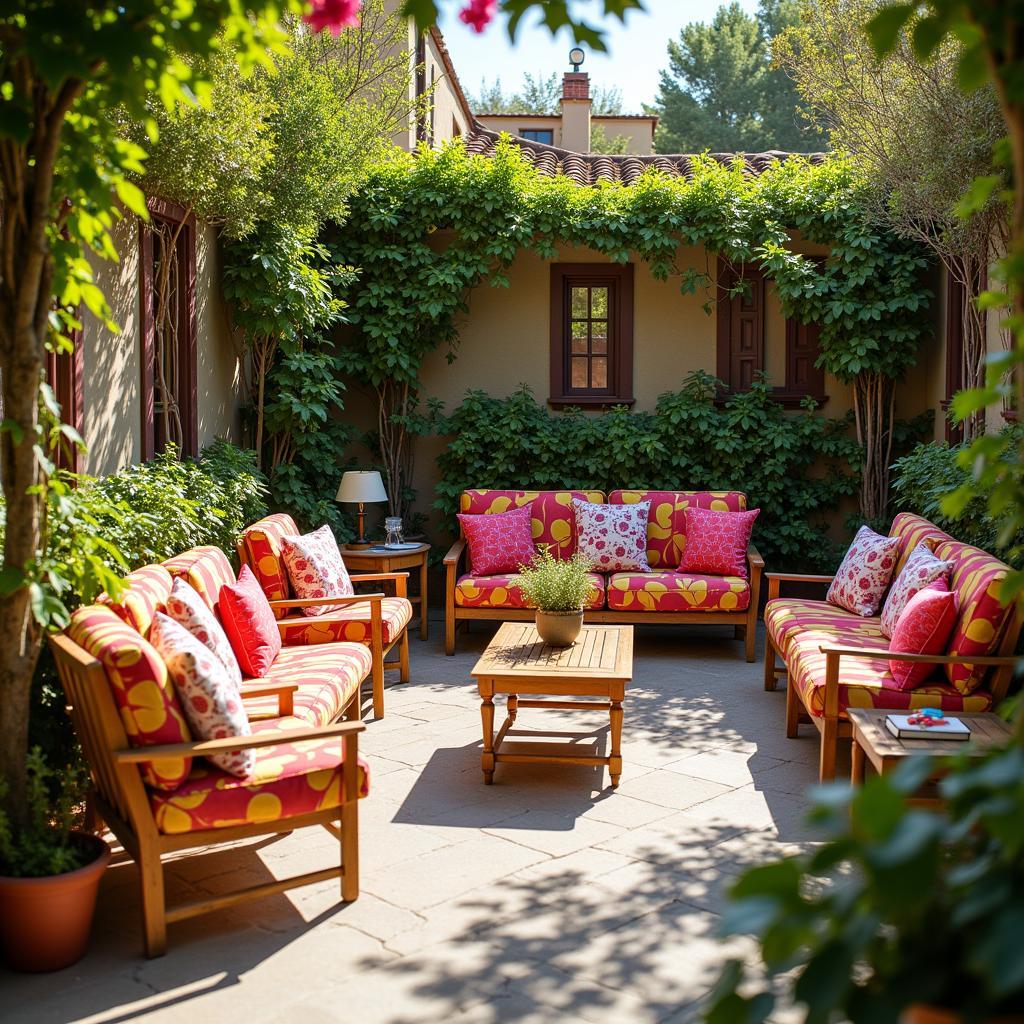Are Outdoor Furniture Cushions Waterproof?
Introduction Outdoor furniture cushions are essential for enhancing the comfort and aesthetics of your outdoor spaces. They provide the necessary support for enjoying leisurely hours on the patio or in the garden. However, one common concern is whether these cushions can withstand exposure to moisture. Moisture can be a significant issue, potentially leading to sogginess, mold, and mildew if not managed properly. This raises questions about whether outdoor furniture cushions are truly waterproof. Understanding the difference between waterproof and water-resistant materials is crucial when selecting the right cushions for your needs. Waterproof vs. Water-Resistant Cushions Understanding these distinctions helps in making informed decisions and choosing cushions that provide both durability and comfort. Understanding Outdoor Furniture Cushions Outdoor cushions are an essential part of patio furniture, providing comfort and style to outdoor living spaces. When choosing cushions, it’s important to know the different types of outdoor cushions available. Here are some common types: The materials used in these outdoor cushions play a significant role in their durability and performance. Some commonly used materials include: When selecting the best fabric for your outdoor cushions, it’s crucial to consider factors such as durability, maintenance, and weather resistance. You can find helpful tips on how to choose the best outdoor fabric for cushions here. Moisture resistance varies significantly among products. Some cushions feature water-resistant fabrics that can handle light rain but might still absorb water if exposed over time. Others come with waterproof materials that prevent any water penetration, often at the cost of breathability. The choice between these depends on your specific needs and environmental conditions, highlighting the importance of informed decision-making when selecting outdoor furniture cushions. Types of Moisture Resistance in Outdoor Furniture Cushions Understanding the different types of moisture resistance is crucial when selecting outdoor furniture cushions. Here’s what you need to know: Waterproof Cushions Definition: Waterproof cushions are designed to completely block water from penetrating the fabric. They typically feature a plastic coating on the underside, acting as a barrier against moisture. Characteristics: Water-Resistant Cushions Definition: Water-resistant cushions are designed to resist light rain and moisture but may not withstand prolonged exposure to water. Characteristics: Water-Repellent Fabrics Explanation: Water-repellent fabrics offer a middle ground between waterproof and water-resistant options. These fabrics allow liquids to bead up and run off rather than being absorbed. Characteristics: Choosing the right type of cushion depends on your specific needs and climate conditions. Each option offers distinct benefits, catering to various preferences and outdoor environments. The Science Behind Waterproofing Outdoor Furniture Cushions Plastic Coatings and Waterproofing Waterproof cushions often use a plastic coating to keep moisture out of the fabric. This coating is usually applied to the underside of the cushion material, creating a barrier that prevents water from seeping through. This technology ensures that while the outside may get wet, the inner filling stays dry, making the cushion last longer. Impact on Breathability and Comfort The downside of such effective waterproofing is its impact on breathability. Plastic coatings tend to trap air and moisture, which can make cushions feel hot and sticky during use. Lack of airflow might lead to discomfort, especially in warmer climates where outdoor seating is desired for relaxation. Balancing Protection and Comfort Designers strive to strike a balance between protection and comfort when creating outdoor furniture cushions. The challenge lies in achieving effective moisture management without sacrificing user comfort. Some manufacturers are exploring innovative solutions like perforated plastic layers or hybrid materials that offer partial breathability while still providing adequate protection against water. Understanding whether outdoor furniture cushions are waterproof involves considering these factors. While plastic coatings offer excellent protection, they come at a cost to comfort, prompting many to seek alternatives that provide both durability and usability in diverse weather conditions. Water-Repellant Fabrics for Outdoor Use Water-repellent fabrics are a better choice than traditional waterproof options for outdoor furniture cushions. Unlike fully waterproof materials that can be uncomfortable due to limited air flow, water-repellent fabrics provide both protection and breathability. This type of fabric allows air to circulate, keeping the seating area cooler and more comfortable. Advantages of Water-Repellent Fabrics How Water-Repellent Fabrics Work The innovation behind water-repellent fabrics lies in their ability to cause liquids to bead up and roll off the surface. This is achieved through: Recent Innovations in Fabric Technology Recent advancements have led to significant improvements in fabric technology: These developments ensure that your outdoor furniture cushions remain dry while providing an inviting place to relax. As you consider the waterproofing of outdoor furniture cushions, it’s also important to think about how covers can enhance their longevity. For more information on protecting your outdoor furniture investments, check out our article on whether outdoor furniture covers are worth it. Cushion Fillings and Their Impact on Performance in Outdoor Furniture Cushions Choosing the right cushion filling materials is crucial for ensuring the longevity and comfort of outdoor furniture cushions. Two popular types of fillings include foam and polyester, each offering distinct benefits. Foam Fillings Known for their durability and support, foam fillings can vary in density to provide different levels of comfort. However, traditional foam can absorb moisture, potentially leading to sogginess if not designed specifically for outdoor use. Polyester Fillings Often used due to their lightweight and quick-drying properties. Polyester is a favored choice when moisture resistance is a priority. Some polyester fillings are treated to enhance water repellency, making them suitable for wet environments. The importance of non-absorbent fillings cannot be overstated. These materials help prevent sogginess by resisting water absorption, ensuring that your cushions remain comfortable even after exposure to rain or spills. Non-absorbent fillings also play a critical role in mold prevention, as they dry more rapidly compared to absorbent alternatives. When selecting high-quality fillings, consider these tips: Paying attention to these aspects will help you maintain the functionality and appearance of your outdoor furniture cushions over time. Choosing the Right Outdoor Cushion for Your Needs Selecting the perfect outdoor cushion involves several key considerations. Begin by evaluating the material type—options like

